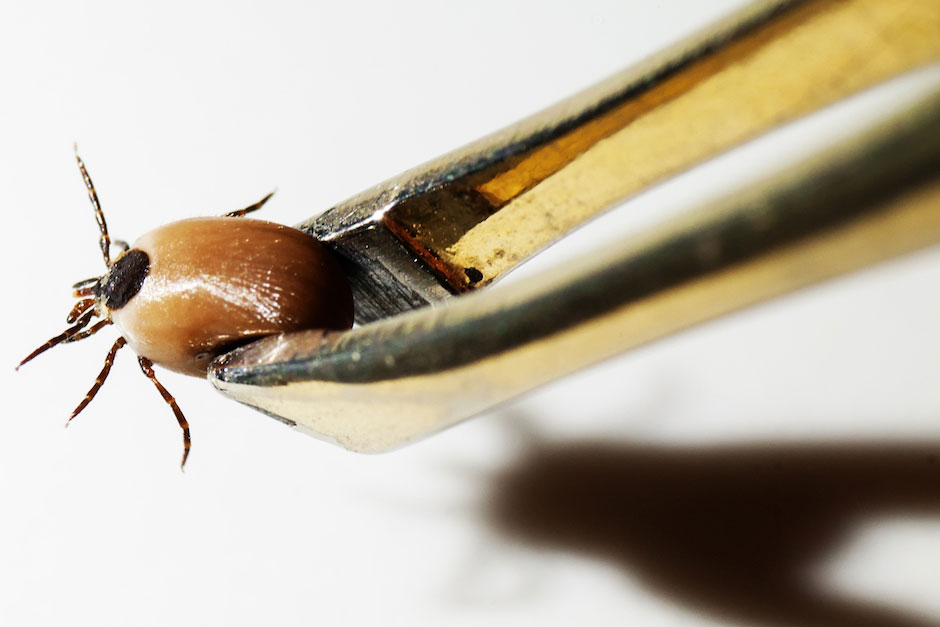What to do when you find a tick?
We’ve barely had a chance to put away our winter gear and already tick season in Connecticut is in full swing. According to the Centers for Disease Control and Prevention, an estimated 300,000 infections occur each year in the United States — with a large portion right here in the Northeast.
Typically, tick season runs from April through October. Based on the number of tick bites we’re seeing in our Hartford HealthCare-GoHealth Urgent Care centers, it is quickly affecting our patients. Tick-borne diseases are on the rise as the tick populations continue an exponential growth that started 20 years ago.
Not all ticks transmit bacteria. Little buggers capable of transmission are the hard-bodied ticks of the genus Ixodes, which can transmit three types of pathogens: bacteria, parasites that infect blood cells and viruses that can cause brain swelling.
The most well-known tick-borne illness, Lyme disease, is caused by a corkscrew-like bacteria, or spirochete. These little guys are picked up by ticks after they feed on animals that are reservoirs for the bacteria, like deer and rodents. There are more than 18 species of spirochete, but only a few can cause Lyme disease.
Ticks can also carry parasites that infect red blood cells, causing serious disease. Babesiosis, anaplasmosis, ehrlichiosis, rickettsiosis, and bartonellosis are diseases caused by parasites.
Ticks are capable of carrying viruses, too, including ones that cause viral encephalitis, or brain inflammation.
If you have dogs, kids or an affinity for nature, we strongly encourage you to make a habit out of tick-checks after being outdoors. Remember, when it comes to ticks, it’s OK to kill the messenger.
How to do a Tick-Check
Pay the mudroom toll and check your and the kids’ clothes, shoes and socks before jumping on the couch after a hike. Ticks often can hang on to clothing, so it’s important to not only do a full skin check but also to check what you’re wearing. Same goes for pets. Comb through your dog’s hair, against the grain, to check for stowaways.
When performing a skin-check, start at the top and work your way down. Make sure to check all crevices: the scalp, behind knees, elbow folds, behind the ears, the back of the neck and even the armpits and belly button. Ticks love to hide!
What To Do if You Find a Tick
If you find a tick embedded in the skin, the chances of transmission of a parasite or a bacteria from the tick to the human is low in the first 20 to 24 hours.
Why? Well, leaving the tick and allowing the parasite to enter your blood is a bit of a process. The parasites that reside in the tick’s midgut, or belly, first need to warm up, detach, then travel to the tick’s salivary glands to be transmitted to a human. Before that even happens, the tick takes a good 10 minutes to latch on securely and then must feed for a while.
The process — from latching on to bacterial arrival in the salivary glands — typically takes 36 to 48 hours. Remember, spirochetes are microscopic, so to keep it in perspective their travel distance is essentially equivalent to crossing a few state lines on a cross-country trip.
How To Remove a Tick
Try the Soapy Cotton Ball technique before reaching for tweezers. Apply liquid soap to a cotton ball until it’s soaked and gently cover the tick with the soap-soaked cotton ball for 30 seconds.
The tick will stick to the cotton ball when you lift it away.
If you have to resort to the tweezers, use blunt, but fine-tipped tweezers (as in skinny but not sharp) to grasp the tick close to the skin (on its head) and pull straight up without twisting or crushing, until it releases its grip. Do this slowly and steadily. Remember, the goal is to take the whole thing out without breaking it, like in Jenga. If you grab the head, the tick will release its grip.
When it comes to very small deer ticks and nymph (baby tick) removal, The American Academy of Pediatrics recommends using a credit card edge to scrape it away over the tweezers dance.
If the tick is not fully removed, clean the skin with rubbing alcohol and use a sterile needle to uncover the head or any other tick parts and lift it these out. Minuscule tick parts that may have been too small for removal will eventually shed with the skin. Post-removal, wash the wound and your hands with soap and water and apply antibiotic ointment.
If you’re concerned about the way a bite looks or if fever, joint pain or rash develop, come in to see us at any walk-in GoHealth Urgent Care Center.
What to Expect at an Urgent Care Center
A provider will likely assess the bite, remove any remaining parts and determine whether you need a one-time dose of antibiotic, or a longer period of treatment. This is based on several factors, including the look of the bite, symptoms and rashes, the number of days the tick had been embedded and the number of days that have passed after the bite.
If the bite is recent, do not expect a blood test. The results can be falsely negative right after a bite.
If you saved the tick, great. But you can leave it behind. The old rule of thumb was to bring a tick in for possible identification, but this is no longer the best way to ascertain that the tick that bit you is benign. Largely because it takes a heavy-duty microscope, and a different kind of academic degree altogether to read the markings on a tick, especially if it is too small.
Fill out the submission form online (download it here) and send your ticks to:
The Connecticut Agricultural Experiment Station, Tick-Testing Laboratory, Slate Building Room 112
123 Huntington St.
P.O. Box 1106
New Haven, CT
06504
The CT Department of Health is now accepting tick submissions at the address above.



